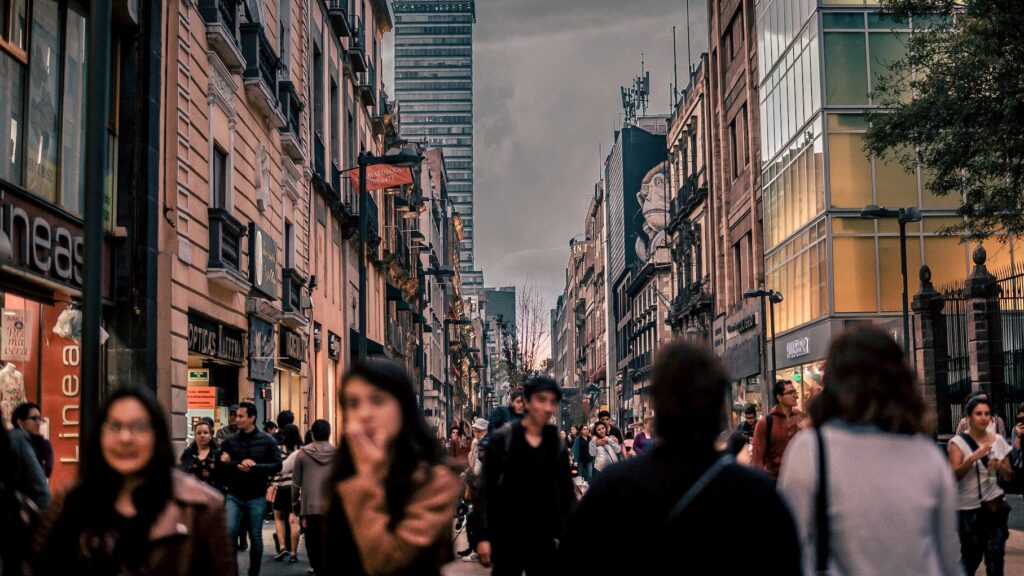New York City has been described as the cultural capital of the world. The culture of New York is reflected in its size and ethnic diversity. As many as 800 languages are spoken in New York, making it the most linguistically diverse city in the world. Many American cultural movements first emerged in the city. Large numbers of Irish, Italian, Jewish, and eventually Asian, African, and Hispanics also migrated to New York throughout the 20th century and continuing into the 21st century, significantly influencing the interculturality and image of New York.
Today, New York City is the world’s greatest melting pot, the perfect example of interculturality. You’ll find vibrant and diverse cultures and ethnic neighborhoods all across the five boroughs of the city. Immigrant groups arrived and gathered into different neighborhoods throughout New York’s history. There they created enclaves filled with diverse cultures, languages, cuisines, and different ways of life. NYC isn’t just a place, for me as Intercultural Coach, it’s an inspiration and motivation to accompany others in bridging cultures and fostering understanding. It’s a classroom. Each interaction, conversation, and shared moment adds to my passion for intercultural coaching. It’s here, amidst the vibrant diversity of NYC, that I see interculturality come to life.

NYC, where interculturality all began
New York City’s history began in 1524 when Italian explorer Giovanni da Verrazzano and the first European settlement in the early 1600s. It was named New Amsterdam by the Dutch. This colony didn’t extend very far beyond the city. This partly explains the cultural, political, and economic divisions with upstate, settled primarily by the New England Puritans migrating west. From the beginning, there were real cultural differences. Founded as a commercial venture by the Netherlands, it was a multicultural society, reflecting its polyglot roots.
During the Revolutionary War, it served as a battleground, enduring a fire in 1776 and British occupation until 1783. Briefly the nation’s capital, it suffered a yellow fever epidemic and emerged as a pivotal port in early 19th century. In 1820 it bolstered its trading status, and by 1860, its population surged to 813,000. By the late 1800s, New York City consolidated into five boroughs—Manhattan, Queens, the Bronx, Brooklyn, and Staten Island. It formed the city we know today, boasting around 3.4 million residents. The pattern had been set.
NYC has so many names. Some are The Big Apple, Capital of the World, The City of Dreams, the City That Never Sleeps, and Gotham. But what I want to touch upon today is it being described as the cultural capital of the world. The culture of New York is reflected in its size, ethnic diversity, and linguistic diversity. But nowhere in the world has more languages than Queens, according to the Endangered Language Alliance (ELA). Just look this Queen’s Languages map presented in this Business Insider article. Impressive!

NYC’s special program for Cultural Sensitivity
With this great diversity, the NYC Department of Social Services understands that it’s crucial to quickly nurture culturally competent individuals. They know it is essential to foster a more inclusive and harmonious world. By integrating these insights, they have formed a curricula focused on intercultural sensitivity. A true transformative process that is marked by distinct stages. At its core, it questions how we perceive cultural differences and when we truly comprehend them. The Bennett Developmental Model, a roadmap from ethnocentrism to ethno-relativism, paints this evolution. This model very similar to Pollock and Van Reken’s 5 step process I mentioned in last year’s blog – The big Changes: the loss of one’s everyday life.
Beginning at the Denial Stage, individuals ignore diversity, often relying on stereotypes. The Progression Stage entails recognizing cultural disparities, but with negative judgments in the Defense stage. Minimization Stage marks an acceptance of surface-level differences but overlooks deeper cultural influences. The pivotal shift occurs at the Acceptance Stage, where differences are appreciated without total agreement. Further growth leads to the Adaptation Stage, where cultural interactions become nuanced, aided by empathy and perspective-taking. Integration Stage is the ultimate goal, where one embraces multiple cultural viewpoints, although rare, signifying true intercultural competence. Integrating these insights into education ensures a culturally effective future.
The previous outlines exactly how, as an Intercultural Executive Coach, I accompany my clients through these stages for them to quickly inspect and understand their own perception of cultural diversity and embrace the new culture before them.



